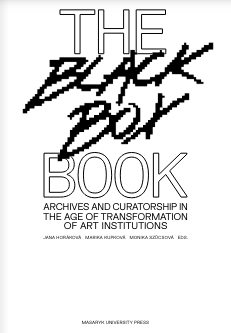Networked art practice after digital preservation
Networked art practice after digital preservation
Author(s): Sarah Cook, Roddy Hunter
Subject(s): Visual Arts, Preservation, ICT Information and Communications Technologies, Sociology of Art
Published by: Masarykova univerzita nakladatelství
Keywords: art; visual arts; curatorship; network; digital preservation;
Summary/Abstract: Over the last six decades, networked art practices have evolved in response to and in anticipation of changing material conditions of communications systems, infrastructures, and technologies. Whether pre-internet correspondence art, or born-digital software-based, or net art, the material and, at times, ideological dimensions of networked art challenge existing approaches, methods, and protocols of not only the production of contemporary art but also its conservation, which this text seeks to address. Often tactically amorphous, integrated, and inseparable from conditions and questions of (im)materiality (see Lillemose, 2006), networked art resists conservation efforts to trace its edges and boundaries. Therefore, how and should we develop conservation efforts to offer access to the ‘original’ work in context without undermining its unruly materiality and institutional critique, particularly after the digital? Whether these efforts are called ‘conservation’ by museum curators, or ‘preservation’ by librarians and archivists, they share the same intent: making the work accessible. In the words of Peggy Phelan this “ labour […] to ‘preserve’ [performance] is also a labour that fundamentally alters [it]” (Phelan, 1993, p. 148).
Book: The Black Box Book: Archives and Curatorship in the Age of Transformation of Art Institutions
- Page Range: 192-227
- Page Count: 36
- Publication Year: 2022
- Language: English
- Content File-PDF

